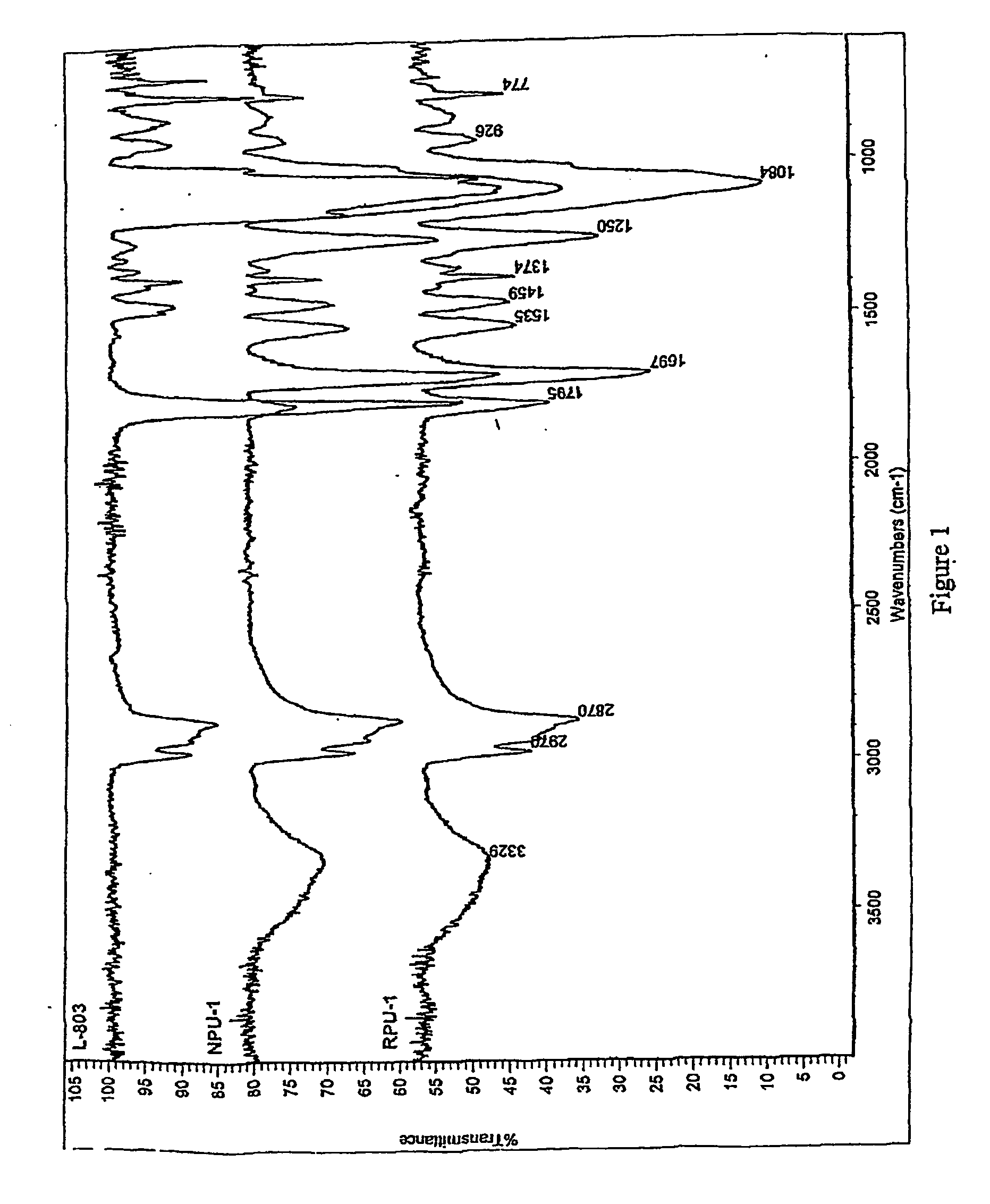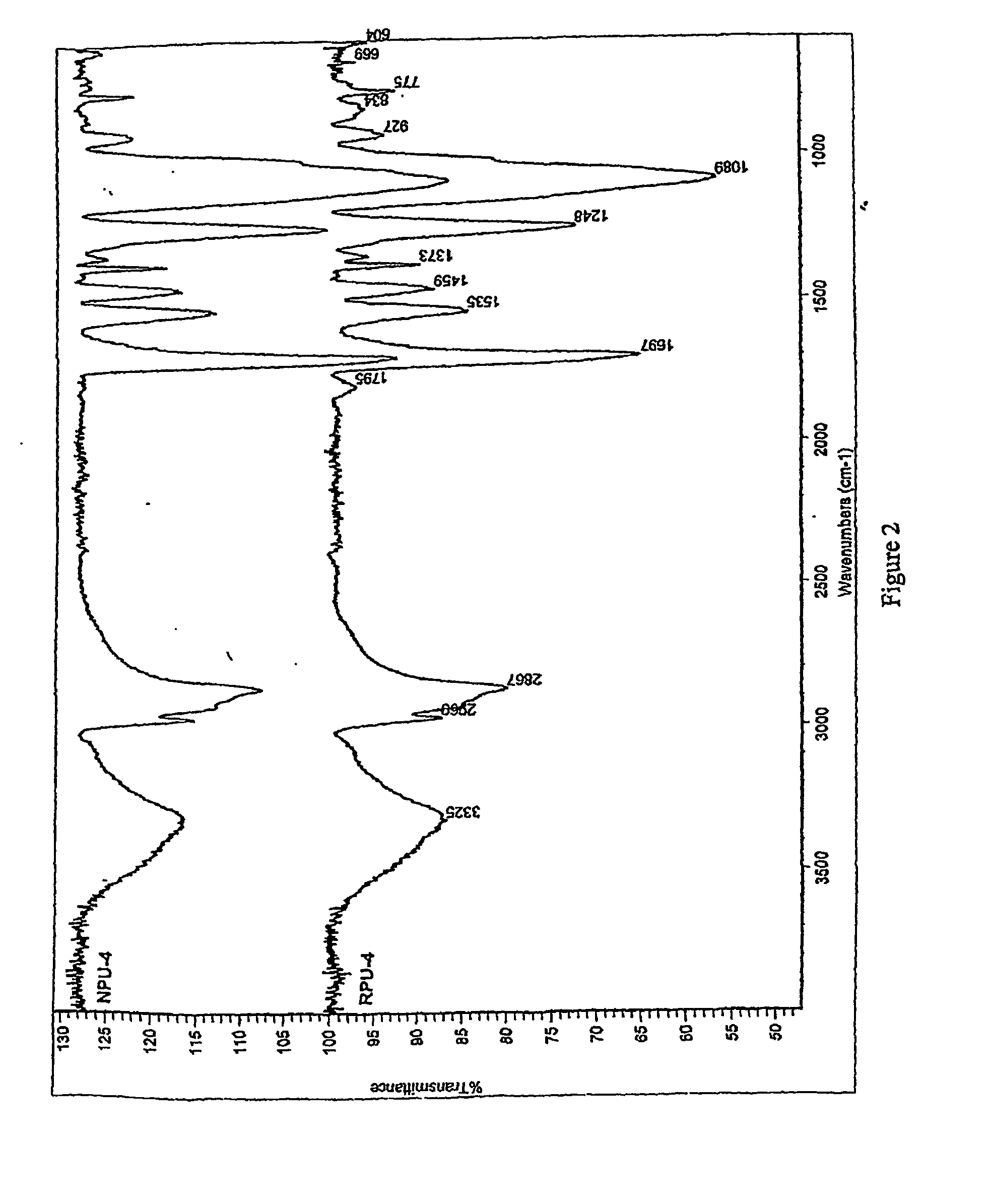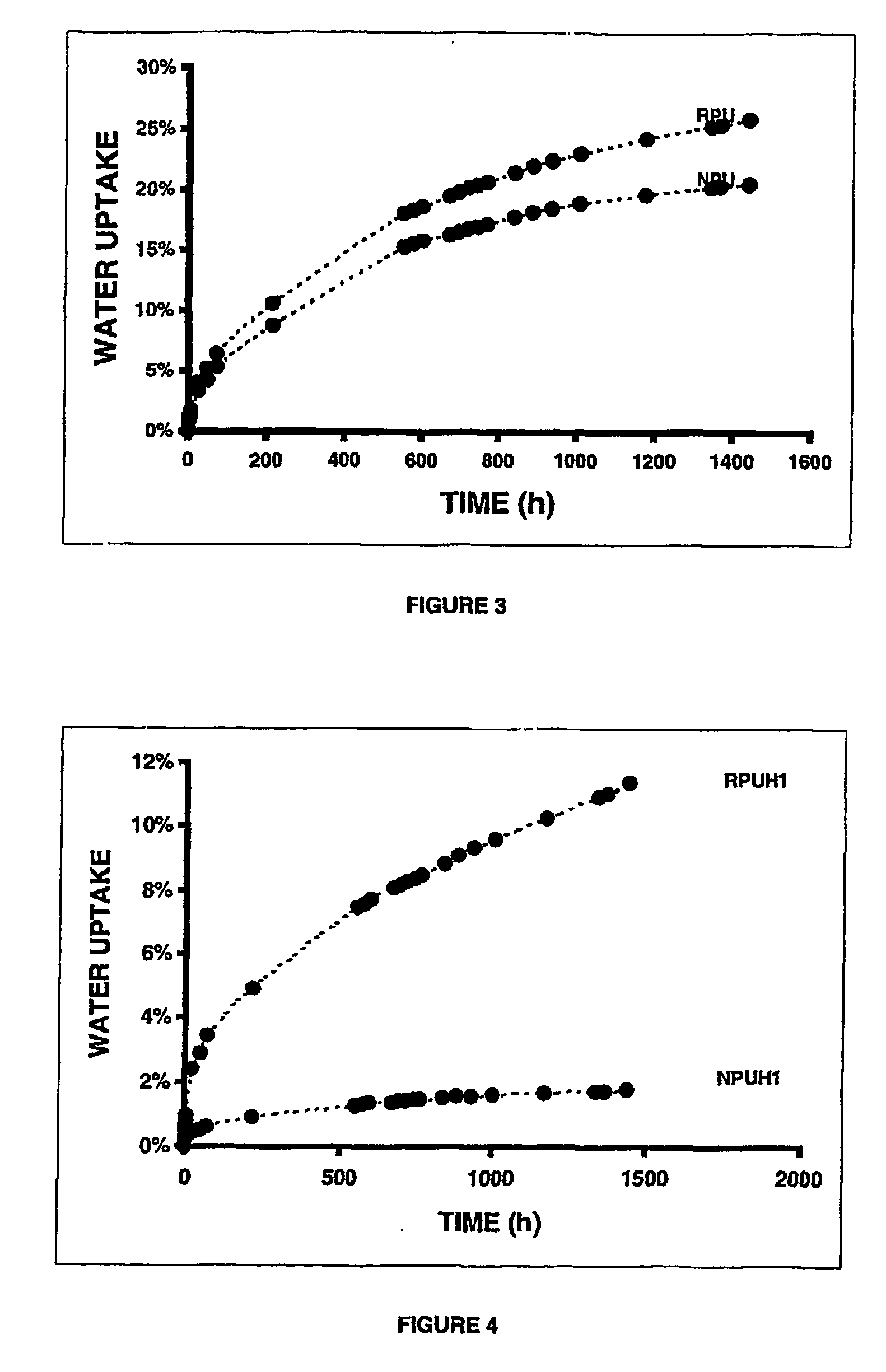Nanocomposites based on polyurethane or polyurethane-epoxy hybrid resins prepared avoiding isocyanates
- Summary
- Abstract
- Description
- Claims
- Application Information
AI Technical Summary
Benefits of technology
Problems solved by technology
Method used
Image
Examples
examples 2-7
Preparation of Dispersions of Nano-Clays into Various Polymers
[0070] Solventless dispersions of Cloisite 25A (Southern Clays) and Nanofil32 (Süd Chemie), into various resins or polymerizable monomers were carried out via the following general procedure:
[0071] 100 parts by weight of a resin or a resin mixture, as set out in see Table 2, was mixed with one of the aforementioned nano-clays (10 parts by weight) and placed in a round bottom flask equipped with a mechanical stirrer, heating mantle and a digital temperature controller (acc. ±1° C.). The mixture was heated at a temperature between 50 to 60° C. for 6 h under high shear (3-3500 rpm). The dispersed product was then removed from the flask and placed in a plastic container. Table 2, summarises the preparation of each of the dispersions (resin, nano-clay, temperature) and the product names assigned to them.
TABLE 2Resin orMixtureTemperatureProductExampleof ResinsNano-clay(° C.)name2L-803Cloisite 25A60D44083L-803Nanofil 3260D38...
example 1
*See Example 1
Examples 8-15
Preparation of Mixtures of Nano-Clays into Various Polymers
[0072] Solventless dispersions of Cloisite 25A, Cloisite Na (Southern Clays), Nanofil32 (Süd Chemie), and Montmorillonite K10 in MY-0510 epoxy resin or MY-20CC-80EP were formed via the following general procedure:
[0073] 100 parts by weight of MY-0510 resin or the resin mixture MY-20CC80EP was hand-mixed for 5-10 min with a nano-clay (10 parts by weight) at ambient temperature, as detailed in Table 3.
TABLE 3Resin orExam-MixtureTemperatureProductpleof ResinsNano-clay(° C.)name8MY-0510Cloisite 25A25MEPOXY25A9MY-0510Cloisite Na25MEPOXYNa10MY-0510Nanofil 3225MEPOXY3211MY-0510Montmorillonite25MEPOXYK10K1012MY-20CC-Cloisite 25A25MEPPU25A80EP13MY-20CC-Cloisite Na25MEPPUNa80EP14MY-20CC-Nanofil 3225MEPPU3280EP15MY-20CC-Montmorillonite25MEPPUK1080EPK10
Examples for Non-Isocyanate-Based Polyurethanes and Polyurethane / Epoxy Hybrid Nanocomposite Formulations
examples 16-18
Preparation of Reference Formulations
[0074] A series of typical reference formulations representing non-isocyanate-based polyurethane (referred to hereafter as “RPU”, standing for Reference Polyurethane) (Example 16), and polyurethane-epoxy hybrids (referred to hereafter as “RPUH1” and “RPUH2” standing for Reference Polyurethane Hybrid 1 and 2) were prepared (Examples 17 and 18); such formulations did not contain nano-clays. Table 4 summarizes the composition and the product names assigned to the reference formulations.
TABLE 4Example161718RPURPUH1RPUH2Resins and HardenersWeight (g)L-803100MY-20CC-80EP100100DETA16.2TEPA35.414Ethacure-10035
Procedure:
[0075] Reference formulations RPU, RPUH and RPUH2 were prepared as follows: [0076] 1st step: Addition of all the components. [0077] 2nd step: Thorough mixing.
[0078] The aforementioned reference compositions were cured as follows yielding different hybrid materials:
RPU:
[0079] Room temperature / 1 day (RPU-1) [0080] Room temperature / 4...
PUM
| Property | Measurement | Unit |
|---|---|---|
| Fraction | aaaaa | aaaaa |
| Fraction | aaaaa | aaaaa |
| Weight | aaaaa | aaaaa |
Abstract
Description
Claims
Application Information
 Login to View More
Login to View More - R&D
- Intellectual Property
- Life Sciences
- Materials
- Tech Scout
- Unparalleled Data Quality
- Higher Quality Content
- 60% Fewer Hallucinations
Browse by: Latest US Patents, China's latest patents, Technical Efficacy Thesaurus, Application Domain, Technology Topic, Popular Technical Reports.
© 2025 PatSnap. All rights reserved.Legal|Privacy policy|Modern Slavery Act Transparency Statement|Sitemap|About US| Contact US: help@patsnap.com



